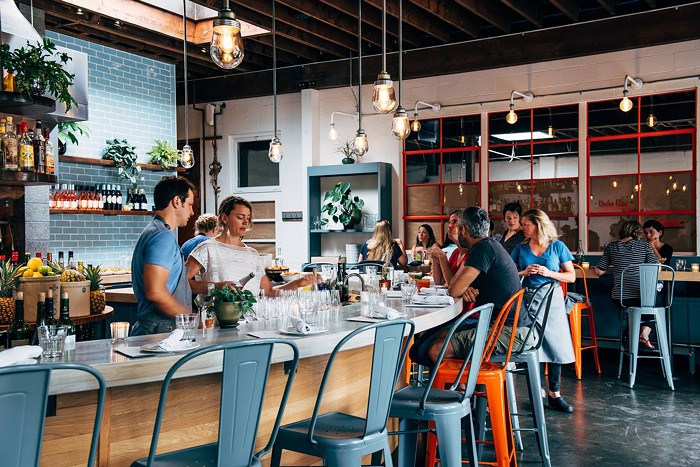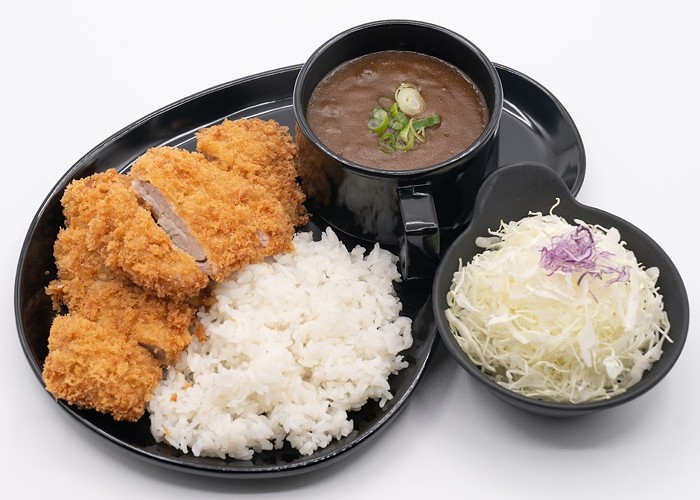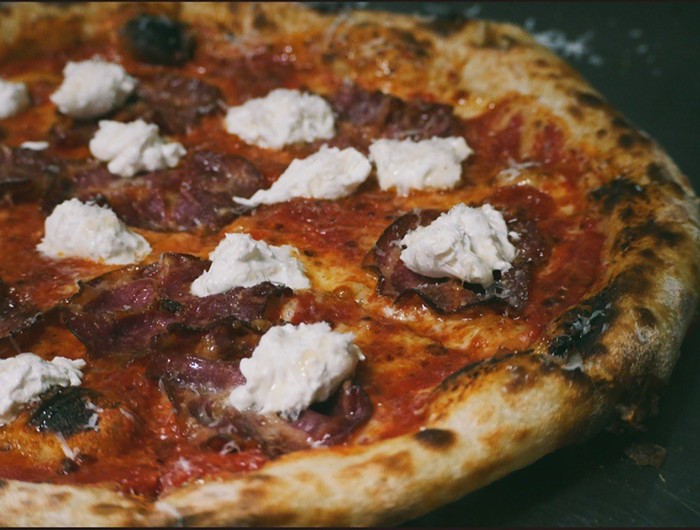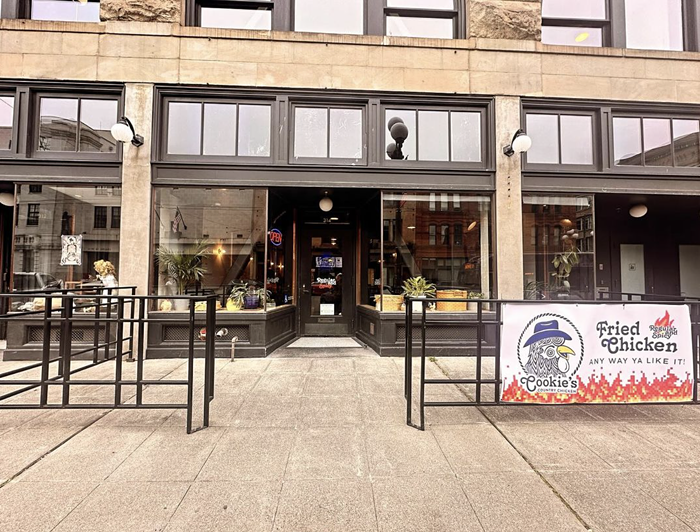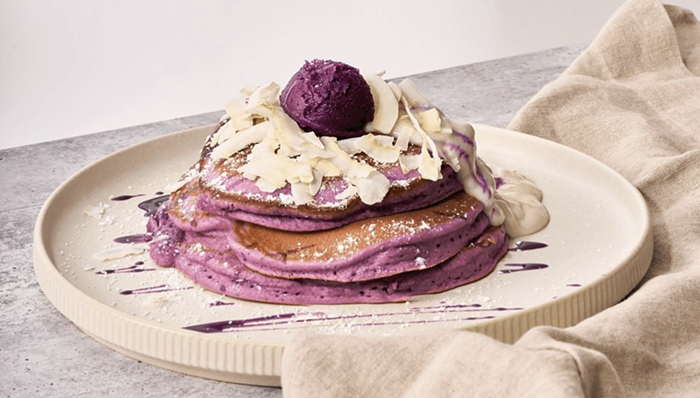On the bar at Kaname Izakaya and Shochu Bar, crazy-eyed ceramic frogs encircle a small stand of lucky bamboo. The bamboo has a tag depicting happy pandas; the bamboo is "recommended by today's feng shui masters to give a person more energy to face today's challenging lifestyles." On the television above the bar, a Japanese heroine-singer, with ribbons in her hair, does battle from a futuristic motorcycle with armed pandas; they get her in the crosshairs of their automatic weapons, then the opposite of a happy face appears on the screen. It is awesome.
Kaname's bar top is made of a long, thick slab of redwood sealed under a deep, glossy varnish. Another piece of the same tree anchors the back wall of the room, looking like it grew there; around it are chrysanthemums and a photo of three young men of yesteryear. Kaname is a family affair—the bartender, who is graciousness incarnate, says her husband drove to Oregon to get the redwood himself. (Later, as the staff sits down for late dinner in the bar, he says he bought it off a guy in Salem on Craigslist.)
The bar's specialty, shochu, is big in Japan—more popular than sake. It's something of a superliquor: low calorie and supposedly actively healthful, purported to prevent heart attacks. While shochu means "fiery liquor"—it's usually made from barley or sweet potato—it's smoother, less gasoliney, than standard vodka, with an alcohol content between sake and hard liquor. The bartender is pleased to make shochu cocktails: one with matcha tea, green and sweet, served in an elegant dark-colored bowl; one shochu martini, nearly neutral, tasting more like wood than flame.
Shochu's mildness is also hailed as perfect with food, particularly at Japanese izakaya, the hot-snacks improvement on the plain old bar. Izakaya small plates tend toward the salty and strong-flavored, the grilled, fried, and odd textured. The bartender looks surprised by, then happy about an order for natto ("Really?!"), slimy fermented soybeans that taste objectively rotten. At the other extreme, Kaname's gyoza are dry, with extrabland filling. Deep-fried shrimp are more interesting than they sound, shells left on and crispified by boiling oil, with an exterior sweet-and-sour treatment. You eat the whole creature, crunchy tail and all. An order of takoyaki, octopus-centered dough balls with a plummy brown sauce and mayo, are a little bigger than usual, making for more delicious (or gross, depending on your disposition) liquefaction of the dough. (The usual whisper-light bonito flakes wave in the heat on top, making the dumplings look alive.) A tofu "steak" served sizzling on a platter is topped with bean sprouts, enoki mushrooms, and a salty soy-based sauce.
Kaname's snacks are standard-issue izakaya, but they're cheap, and so are the drinks—at around $6 each, perfect treats for today's challenging lifestyles. ![]()

